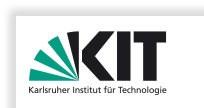DITEFA (DIvertor TEst FAcility) is a small multipurpose liquid metal test facility for thermo-hydraulic investigations related to solar, fusion and nuclear energy. The main purpose of this test facility is to study the behavior of liquid metals during forced, mixed and natural convection. The transition between heat convection regimes is very important during start-ups, planed and emergency shut downs of the mentioned power plants. More details can be found here: http://www.inr.kit.edu/english/702.php
The working fluid in the DITEFA facility is Galinstan (https://en.-wikipedia.org/wiki/Galinstan), a metal alloy that is liquid at room temperature. This characteristic allows the operation of the DITEFA at room temperature. Relevant temperature, velocity and turbulent heat flux measurements will be taken with special instrumentation developed here at INR-KIT.
To guarantee optimal boundary conditions for these measurements, proper wetting of the walls and the instrumentation must be guaranteed. Without a well-wetted wall, the heat transfer from the wall to the fluid may be drastically reduced and it will not be possible to assure a uniform heat flux from the wall. Also, the pressure drop along the duct will increase.
Although some information regarding wetting and surface-cleaning procedures of Galinstan on stainless steel and other surfaces can be found in the literature, the experience at KIT shows that this information cannot be applied directly. The wetting process may be considered as a key know-how issue that can only be defined by experimentation (try-and-error), particularly considering that Galinstan has a very high surface tension.
The main goal of this bachelor thesis is focused on elaboration of adequate procedures for proper cleaning and wetting of different surfaces under different conditions.
The applicant has to plan, design, perform, analyze and present different cleaning and wetting procedures answering the following questions:
- What is the influence of the cleaning agent in the wetting procedure?
- What is the ideal wetting procedure? Mechanical? Chemical?
- What are the procedural differences in wetting different surface plates as for example: different types of stainless steels (with and without previous welding traces), copper, plexiglas and plastics?
- How fast does GaInSn oxidize? Is there a need for wetting the surfaces under an argon atmosphere?
- What is the critical radius through which GaInSn can flow due to its high surface tension?
Supervisor: Thomas Schaub, Tel. +49 (0) 721 608 22751. If interested, please send an application to thomas.schaub@kit.edu.
Timeframe: This thesis/internship is restricted to a time window of 4 months.

